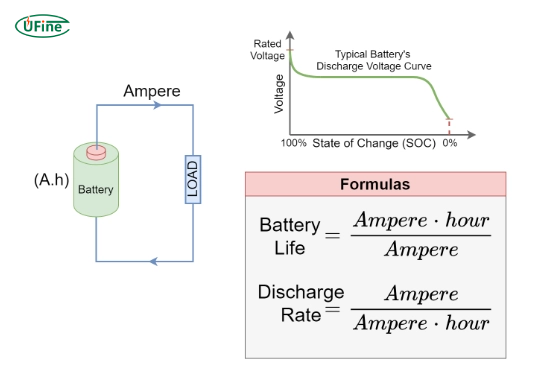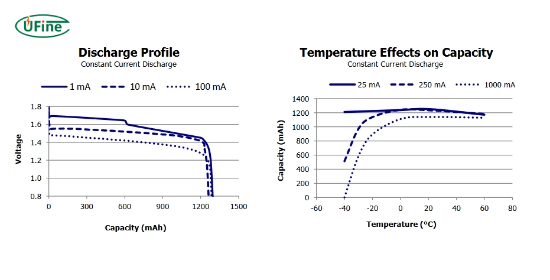Have you ever wondered why your results vary using a battery longevity calculator? The simple answer is that several critical factors influence how long your battery will last, and the calculator adjusts based on your inputs.
In this article, we’ll break down the top 5 factors that affect your calculator results. We’ll also explain how to improve your battery’s lifespan and get more accurate estimates. This guide is written straightforwardly to help you understand everything, even if you’re new to batteries.
Part 1. What is a battery longevity calculator?
A battery longevity calculator estimates how long a battery will last based on several variables. It is commonly used by people who rely on batteries for solar systems, RVs, boats, or backup power.
How does it work?
The tool takes inputs such as battery type, capacity, load, temperature, and usage pattern. It performs a calculation to predict the expected lifespan of your battery.
Part 2. Why does the battery longevity calculator result change?
The result changes because batteries don’t work the same in every condition. For example, a car gets better mileage under certain driving conditions, but a battery lasts longer when used correctly. Your inputs tell the calculator what kind of environment and usage the battery is experiencing.
Part 3. Battery type: Why chemistry matters
One of the biggest influences on your battery longevity calculator result is your battery type. Here’s why:
- Lithium-ion batteries usually last longer. They support more charge/discharge cycles.
- Lead-acid batteries degrade faster, especially if deeply discharged.
- AGM and Gel batteries are sealed, maintenance-free, and perform better than standard flooded lead-acid types.
Tip: Always select the exact chemistry if your calculator asks for battery type. This helps fine-tune the estimate.
Part 4. Depth of discharge (DoD): How much you use matters
Depth of Discharge (DoD) refers to how much of your battery’s capacity you use before recharging. This is a major factor in lifespan.
- A lower DoD (20-30%) means the battery lasts longer.
- A higher DoD (like 80-100%) reduces lifespan.
Example: A lithium battery rated for 3000 cycles at 80% DoD could last over 5000 cycles at 50% DoD.
So, if your usage pattern involves deep discharges, the calculator will show a shorter lifespan.
Part 5. Charge and discharge rate: Avoid going too fast
Charging and discharging too quickly can overheat the battery or stress its internal structure.
- C-rate (charge/discharge rate) tells how fast energy flows in or out.
- A slow, steady rate is healthier.
- If you regularly draw large currents, the calculator reduces the estimated lifespan.
Tip: Check the discharge rate if your inverter or devices have high wattage. Slower is better for longevity.
Part 6. Temperature: Hot and cold affect performance
Your climate plays a big role in battery life. Battery longevity calculators often ask for the average operating temperature.
- High heat accelerates chemical reactions and degrades the battery faster.
- Extreme cold reduces usable capacity and increases internal resistance.
- Ideal range: Most batteries prefer 20°C to 25°C (68°F to 77°F). Expect a shorter life outside this range.
Part 7. Charging habits: Smart charging saves batteries
How you charge your battery matters as much as how you use it.
- Overcharging heats the battery and causes damage.
- Undercharging leads to sulfation in lead-acid batteries.
- Using the correct charger and settings can extend life.
Some calculators ask how often you fully charge your battery — this input helps them fine-tune the result.
Part 8. Maintenance and care: Small habits, significant results
Your habits also influence battery longevity.
- Cleaning terminals prevents corrosion.
- Equalising charge (for lead-acid) balances cells.
- Regular inspections help catch problems early.
These aren’t always input in calculators, but they explain why real-world results may differ from what the calculator shows.
Part 9. How to get the most accurate battery longevity calculator results
To make sure your calculator results are as precise as possible, follow these tips:
- Know your battery specs: capacity, chemistry, and voltage.
- Measure your energy use: calculate how many watts or amps you use daily.
- Track your charging habits: frequency, charger type, and voltage levels.
- Check your environment: average temperature and humidity.
- Be honest about usage patterns: don’t guess.
The more accurate your inputs, the more useful the output.
Part 10. Real-life example: Comparing two battery setups
Let’s say we have two users:
- User A has a 100Ah lithium battery, uses 30% DoD daily, charges slowly, and lives in a mild climate.
- User B has a 100Ah lead-acid battery, discharges 80% daily, charges rapidly, and lives in a hot region.
Even with the same capacity, User A’s battery may last 8-10 years, while User B’s might only last 2-3 years. That’s why battery longevity calculators can show very different results — they tell the story of your usage style.
Part 11. FAQs about battery longevity calculator
What is a battery longevity calculator?
A battery longevity calculator is a tool that estimates a battery’s life based on factors such as type, usage, temperature, and charge cycles.
Why is my battery longevity calculator result so low?
Your result may be low due to deep discharges, high temperatures, or fast charging rates. Try adjusting these habits to improve lifespan.
Can I trust battery longevity calculators?
Yes, but only if you enter accurate, detailed inputs. They’re estimates, not guarantees, but they’re helpful for planning.
How can I increase my battery’s lifespan?
- Avoid deep discharges
- Charge slowly and fully
- Keep the temperature between 20-25°C
- Use the right charger
- Maintain your battery regularly
Do lithium batteries last longer than lead-acid?
Lithium batteries usually last 2-4 times longer due to higher cycle life and better resistance to deep discharge.
Part 12. Final thoughts
Understanding the factors that impact your battery longevity calculator results can help you make smarter choices. Whether you’re powering a solar home, an RV, or a boat, knowing how your usage affects battery life ensures you get the most out of your investment.
Related Tags:
More Articles

Why Lithium Weighing Machine Batteries Outperform Other Battery Types
Lithium weighing machine batteries outperform others with higher energy density, longer life, faster charging, and better reliability.
How to Choose the Best Food Scale Battery for Accuracy and Longevity?
Choosing the best food scale battery ensures precise readings, long life, and stable performance for home chefs and professionals alike.
The Ultimate Guide to Choosing the Right Ice Fishing Battery for Your Setup
Find the best ice fishing battery for your gear with this guide. Learn types, sizes, and tips to keep your setup running strong all winter.
Why Lithium Is the Best Battery for Ice Fishing: 7 Scientific Reasons
Lithium batteries excel in ice fishing with superior cold performance, longer life, and lighter weight with seven science-backed reasons explained.
How to Choose the Best Lithium Watch Battery for Your Timepiece?
Learn how to choose the best lithium watch battery to boost performance, ensure safety, and extend the life of your analog or digital timepiece.





